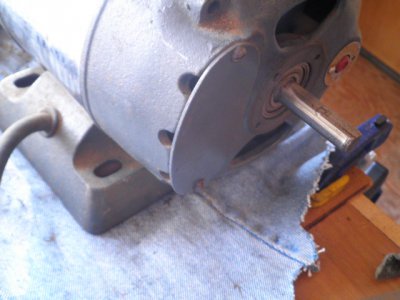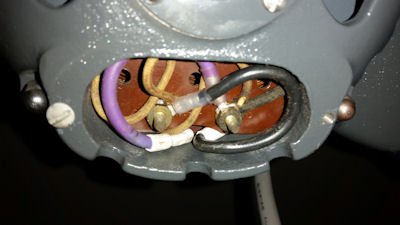Don't know on your particular model, but Craftsman used that motor on a lot of the power tools they made, everything from drill presses to band saws. That is one of the best motors they ever used and the HP ratings on motors back then were more conservative than now. The only downside is they use a flat capacitor in the base that is no longer available. When they go bad you have to do some adapting to replace it with a modern round or oval one. At some point they changed to 5/8" shaft motors and for a lot of their tools afterwards if you bought a replacement motor pulley it would be a 5/8" bore and come with a 1/2" sleeve so you could use it for either shaft size. The quirky thing about them was the power switch, when used on a drill press, up was "on" and down was "off".
-
Welcome back Guest! Did you know you can mentor other members here at H-M? If not, please check out our Relaunch of Hobby Machinist Mentoring Program!
You are using an out of date browser. It may not display this or other websites correctly.
You should upgrade or use an alternative browser.
You should upgrade or use an alternative browser.
12" Atlas Reverse Tumbler Gear Stud
- Thread starter paul s
- Start date
- Joined
- Dec 25, 2011
- Messages
- 10,511
Up = ON and Down = OFF is standard in the US and reversed in the UK. The motor, from the 6.7 FLA shown on the nameplate is a 1/3 HP. The buggered up keyway needs to be dressed so that the pull is a slip fit onto the spindle. And don't ever run it without the square key (probably 1/4") in place. You can see a circle at the bottom of the keyway which shows that some dummy put the pulley on without a key at some time in the past. That may also be what caused the damage to the shaft.
- Joined
- Dec 25, 2011
- Messages
- 10,511
OK. But the motor pulley has a keyway broached in it. Which is standard for all of the 5/8" bore pulleys. In that case, the proper installation would use a 1/4" wide key, with the other dimension ground or milled to be a slip fit. Probably around 5'16". Having 1/4" of set screw sticking out is just asking for a damaged motor shaft.
I'm just wondering if any of this is original to the lathe?
They sold lathes (and many of their other power tools) without motors for those that wanted to supply their own.
The era of that motor appears to be early to mid 50's (look for a stamped date code on the label) so would have been available the same time as your lathe.
In the 50's and 60's there were an awful lot of Craftsman tools powered by old washing machine motors.
OK. But the motor pulley has a keyway broached in it. Which is standard for all of the 5/8" bore pulleys. In that case, the proper installation would use a 1/4" wide key, with the other dimension ground or milled to be a slip fit. Probably around 5'16". Having 1/4" of set screw sticking out is just asking for a damaged motor shaft.
Good point - the pulley did have a bit of a wobble before I pulled it off. Having a key might mitigate that, certainly couldn't hurt.
I'm guessing that the previous owner must have used the switch on the motor, reaching all the way around the headstock, since the motor has a cord and plug on it, uninterrupted.
- Joined
- Dec 25, 2011
- Messages
- 10,511
If the motor switch is the only currently working switch, I recommend hooking up the headstock mounted switch and just leave the switch on the motor in the ON position. Reaching over or around the headstock is just asking for trouble.
- Joined
- Dec 25, 2011
- Messages
- 10,511
Subject to where the motor mounted switch is located, that might be another way to do it. However, if you have rug rats or other knob twiddlers around, the motor mounted switch might be treated as a safety measure. Whenever you are done wtih the lathe, turn off the motor mounted switch. Someone just walking by who has an irresistible urge to flip the headstock mounted switch and does so will be rewarded with nothing happening.
If you do decide to tie the headstock mounted switch into the motor and leave the motor mounted switch in place, identify the hot wire coming from the switch. Disconnect it from its terminal and splice it to the black wire going to the headstock switch. Connect the white wire coming from the headstock mounted switch to the terminal from which the wire from the motor mounted switch was removed. And connect the green wire in the cord from the headstock mounted switch to some convenient grounding point at each end.
If you do decide to tie the headstock mounted switch into the motor and leave the motor mounted switch in place, identify the hot wire coming from the switch. Disconnect it from its terminal and splice it to the black wire going to the headstock switch. Connect the white wire coming from the headstock mounted switch to the terminal from which the wire from the motor mounted switch was removed. And connect the green wire in the cord from the headstock mounted switch to some convenient grounding point at each end.



